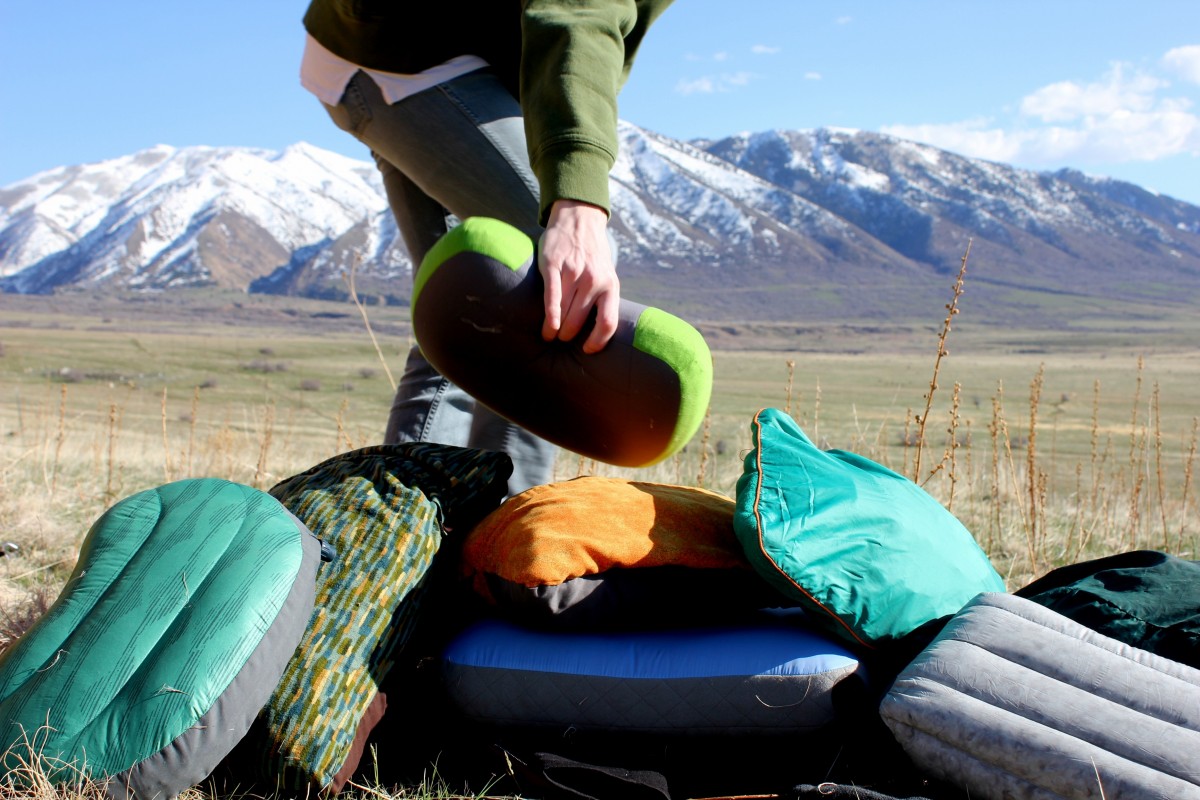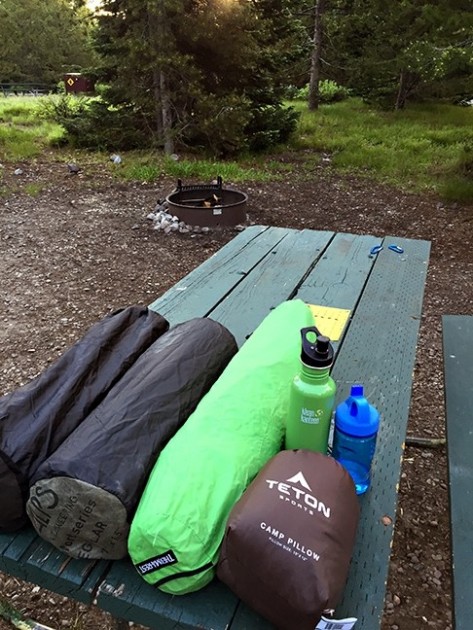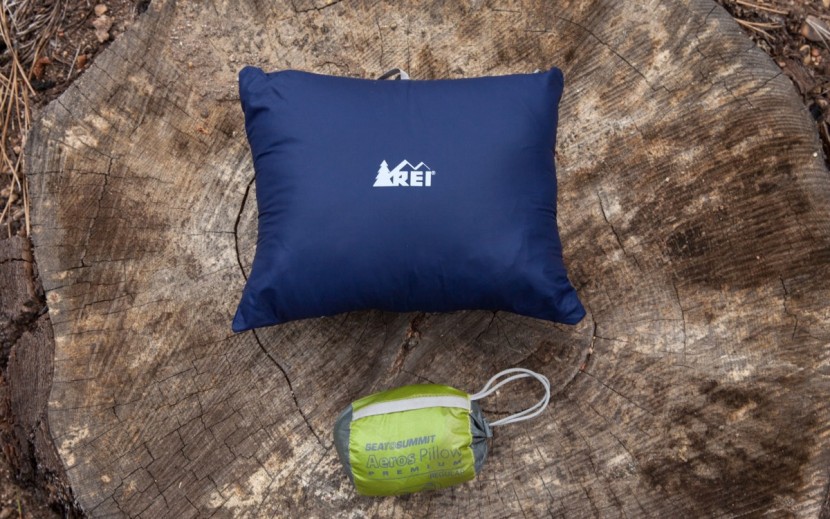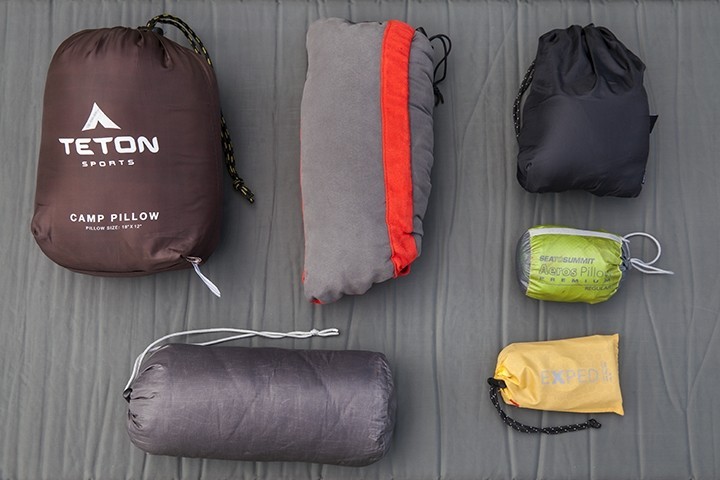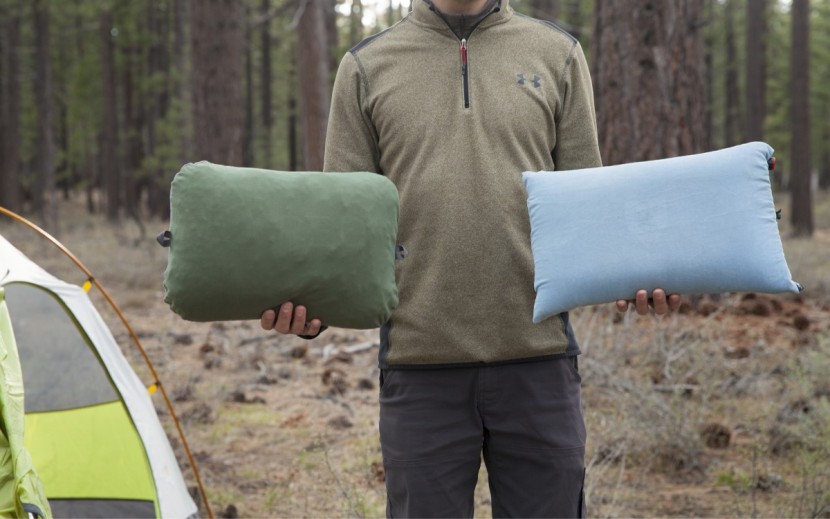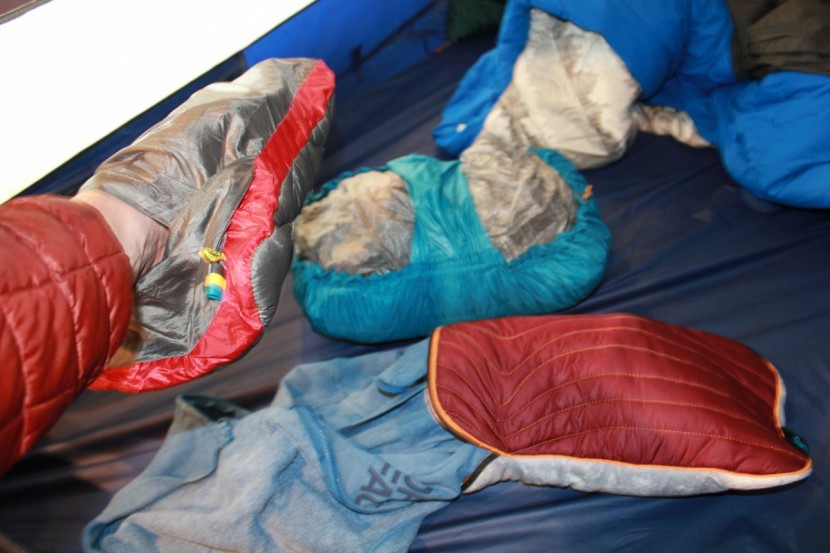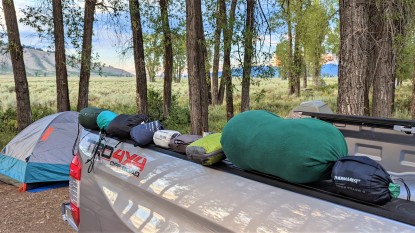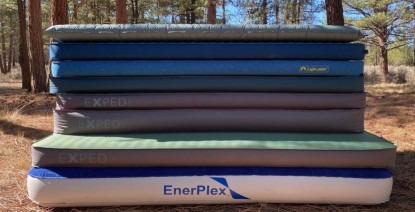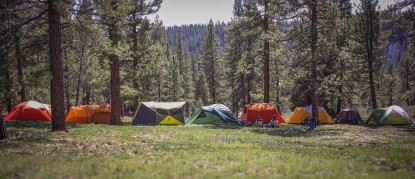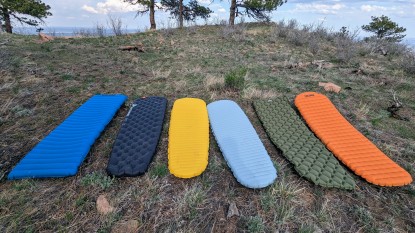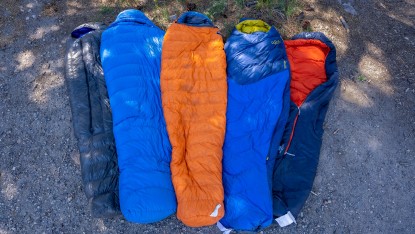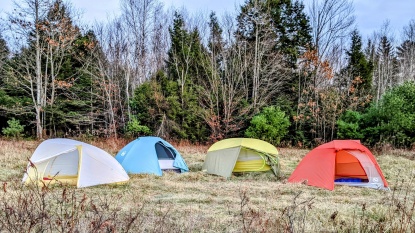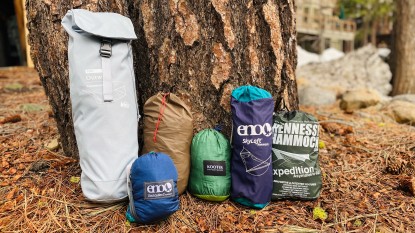Looking for a camping pillow, but unsure where to start? This article summarizes the market options and highlights the key considerations for overnighting in the outdoors. An ideal pillow is one that provides your head with comfort and support through the entire night, not only when you first lie down on it. Manufacturers attempt to provide this with different sizes, shapes, materials, and pillow types. A top contender is also easy to use and maintain, and not add complication to setting up or packing up camp. And as anyone who has packed a backpack knows, it shouldn't take up much space in your pack, nor weigh you down.
But first, do you need a camping pillow? You might not find a pillow to be necessary on camping trips. However, it is hard to contest that folded jackets, climbing ropes, and stuff sacks filled with dirty clothes make for lousy nighttime comfort. If you've ever woken up with an achy neck with a full day of hiking or paddling ahead of you, you know that it is a painful annoyance all day long. For a small (and in some cases, tiny) sacrifice of space and increased weight in your pack, you can improve the comfort level of camping and reduce the chances of waking up feeling like you rode a violent carnival ride.
How Do You Camp?
Consider how you spend your nights in the outdoors. Do you primarily camp in parks and designated campsites with parking nearby? Or do you tend to hike in considerable distances, carrying everything in your pack? Assessing your typical camping situation is essential to finding the right product. The classic compromise between comfort, weight, and packed size is relevant in this gear category. Great comfort correlates with bigger, heavier pillows and, vice versa, small lightweight models tend to lack comfort. Below, we discuss the pillow characteristics to seek for each activity.
Car Camping
This is the most common way people spend nights in the outdoors. It's convenient, fun, and often social. If this is you, go for a pillow that maximizes comfort and support. The Best Buy Award winner in our review, the Therm-a-Rest Compressible is a fantastic choice for car camping. It's plush, soft, supportive, and super easy to use. Its weight and large size are physical properties that don't matter when your campsite is a short walk from your vehicle. Some folks might elect to bring a pillow from their beds at home, but things tend to get abused more on a camping trip than in a home. The products we reviewed are more rugged.
Backpacking
Backpackers have a different set of characteristics to look for in a pillow. When carrying all of your camping gear in your backpack, size becomes an issue. A few models we reviewed take up more space than some sleeping pads, which is not what you want in this situation. Just as important is pack weight. The further you go, the old adage 'less is more' increases its pertinence. Plenty of backpackers and thru-hikers sacrifice the luxury of a pillow to reduce the volume and weight of their packs. A model like the Sea to Summit Aeros, however, has a low volume and weight and is a vast improvement over improvised head support from random pack items.
Types of Pillows
Camping pillows come in four basic types: compressible, inflatable, hybrid, and stuffable. Each type has its own pluses and minuses when it comes to comfort, weight, ease of use, support and packed size. Below, we explain the general differences between these categories.
Compressible
Compressible pillows are filled with down feathers, various foams, and synthetic fibers, or a combination of these. In our review, the compressibles were the softest and came closest to resembling a pillow from our bedrooms. As a result, they are more comfortable than the inflatable models. Needing only to take them out of their stuff sacks, they were also the easiest to use. Down feathers are the softest, most compressible, and most lightweight, but also increase the price of the pillow and suffer regarding support. Synthetic fiber and foam fills are firmer, heavier, and cost less than down feathers. The compressible pillows we tested were heavier than the inflatable pillows, and provided less support as they flattened out under the weight of our heads. They also took up more space in our packs. We liked them best for car camping, or outdoor adventures lasting no more than a few days.
Inflatable
Inflatable pillows are all filled with air, making them lighter and firmer than the compressible and hybrid pillows in this review. To use one, unpack it from its stuff sack and blow in air through a valve. The thickness of each inflatable we tested could be adjusted by letting air out through the valve. When packing these pillows into our bags, they deflated and folded up into a fraction of the space needed by the compressible and hybrid pillows. On the other hand, we found the inflatables to provide the least comfort. They were also the noisiest pillows, producing the most noise as our heads shifted on them. We liked them best for multi-day backpacking ventures, but preferred more comfortable pillows for car camping.
Hybrid
Hybrid pillows bridge the gap between compressible and inflatable pillows. They have a compressible top layer for the head to rest comfortably upon, as well as an inflatable bottom side to increase support while reducing its packed volume. In our testing, we enjoyed the compromise these models provided.
Stuffable
Stuffable pillows are a newer, emerging niche in camping pillows. In a nutshell, they are typically lightly padded, fabric sleeves that can be stuffed with whatever campers have on hand, like extra socks, clothes, or jackets. The benefit to stuffable pillows is a lower weight and a much lower pack volume without sacrificing comfort and support. The stuffable pillows we tested are the Rumpl Stuffable Fleece and the Sierra Designs DriDown Pillow. The Rumpl is the truest form of a stuffable pillow. The DriDown is primarily a compressible pillow; however, the inner pillow can be removed, leaving a sleeve that can be stuffed. The main drawback of stuffable pillows is their comfort and support can be quite varied, due to the wide variety of potential fill.
One unique take on the stuffable pillow is the Therm-a-Rest Down Pillow. This pillow only a down pillow topper. It requires users to use fill own stuff sack with extra clothes. The topper is then secured to the stuff sack to create one system.
Types of Sleepers
Everyone has unique sleeping habits, but most of us gravitate toward one of three sleeping positions. Whether you prefer to sleep on your back, stomach, or side affects the level of support you need to keep your spine aligned. Getting the right level of support from your pillow for your sleeping style plays a major role in waking up without an aching neck or back. Stomach sleepers don't need a lot of support and tend to find ideal support in thin and flat models. Side sleepers are on the other side of the spectrum. A thick and supportive pillow keeps your head level with your spine when lying on your side. Back sleepers are usually attracted to pillows with medium support — a little more than stomach sleepers and less than side sleepers.
Models with inflatable bladders allow for a customized level of support. These designs are more complex than simple compressible models and cost more. If you are prone to waking up sore from a night's sleep in the outdoors, the extra cash could be worth it for adjustable support.
Conclusion
For a relatively small piece of outdoor gear, the camping pillow can play a large role in a good night's rest. Nothing is worse than tossing and turning throughout the night only to face a new 10-mile day on the trail with a loaded pack. However, even if plans only include a weekender at a favorite campground, good sleep is good sleep. We hope this article assists you in your search for the right model for your head.

